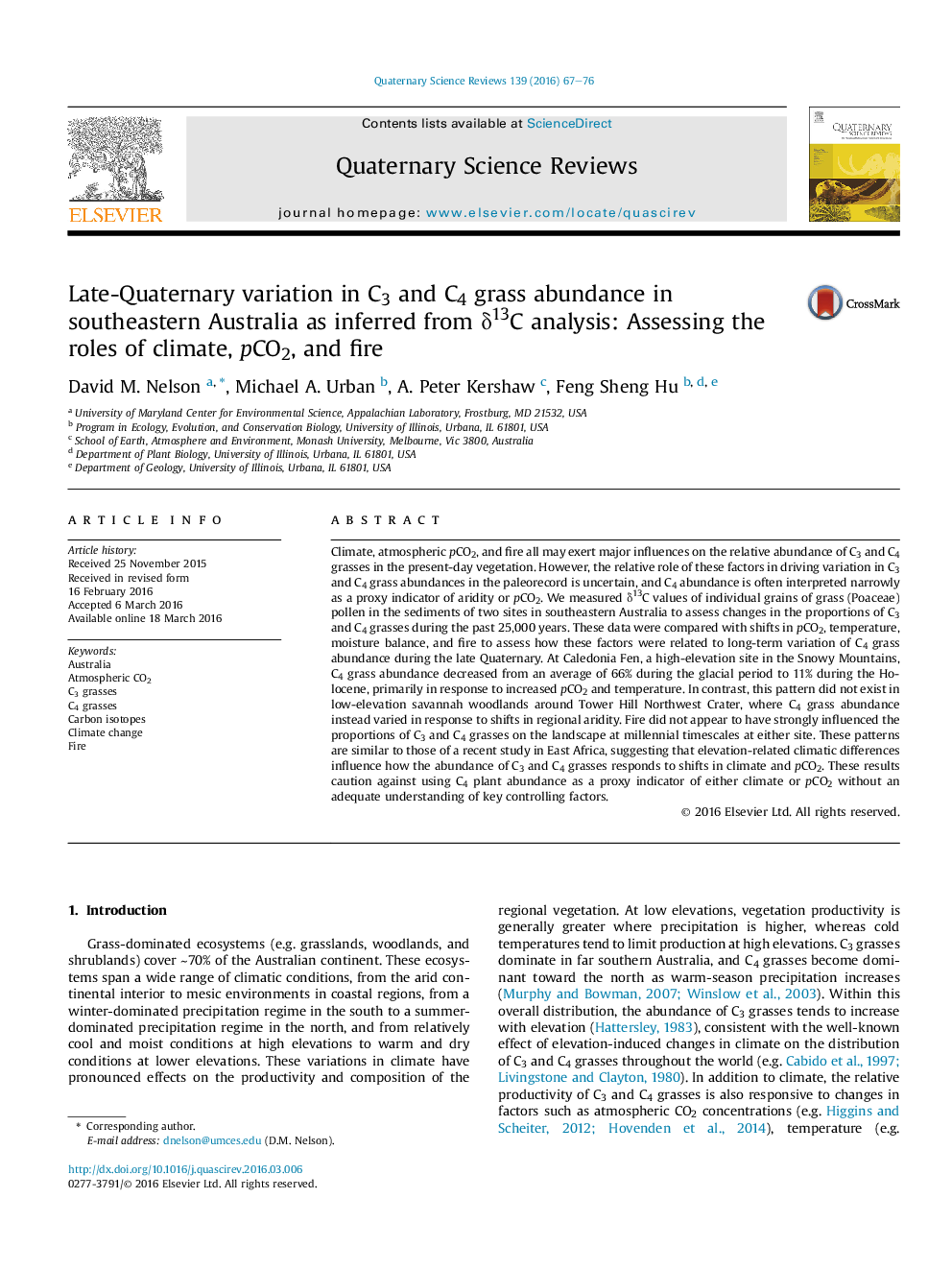| کد مقاله | کد نشریه | سال انتشار | مقاله انگلیسی | نسخه تمام متن |
|---|---|---|---|---|
| 6445425 | 1640796 | 2016 | 10 صفحه PDF | دانلود رایگان |
عنوان انگلیسی مقاله ISI
Late-Quaternary variation in C3 and C4 grass abundance in southeastern Australia as inferred from δ13C analysis: Assessing the roles of climate, pCO2, and fire
دانلود مقاله + سفارش ترجمه
دانلود مقاله ISI انگلیسی
رایگان برای ایرانیان
کلمات کلیدی
موضوعات مرتبط
مهندسی و علوم پایه
علوم زمین و سیارات
زمین شناسی
پیش نمایش صفحه اول مقاله

چکیده انگلیسی
Climate, atmospheric pCO2, and fire all may exert major influences on the relative abundance of C3 and C4 grasses in the present-day vegetation. However, the relative role of these factors in driving variation in C3 and C4 grass abundances in the paleorecord is uncertain, and C4 abundance is often interpreted narrowly as a proxy indicator of aridity or pCO2. We measured δ13C values of individual grains of grass (Poaceae) pollen in the sediments of two sites in southeastern Australia to assess changes in the proportions of C3 and C4 grasses during the past 25,000 years. These data were compared with shifts in pCO2, temperature, moisture balance, and fire to assess how these factors were related to long-term variation of C4 grass abundance during the late Quaternary. At Caledonia Fen, a high-elevation site in the Snowy Mountains, C4 grass abundance decreased from an average of 66% during the glacial period to 11% during the Holocene, primarily in response to increased pCO2 and temperature. In contrast, this pattern did not exist in low-elevation savannah woodlands around Tower Hill Northwest Crater, where C4 grass abundance instead varied in response to shifts in regional aridity. Fire did not appear to have strongly influenced the proportions of C3 and C4 grasses on the landscape at millennial timescales at either site. These patterns are similar to those of a recent study in East Africa, suggesting that elevation-related climatic differences influence how the abundance of C3 and C4 grasses responds to shifts in climate and pCO2. These results caution against using C4 plant abundance as a proxy indicator of either climate or pCO2 without an adequate understanding of key controlling factors.
ناشر
Database: Elsevier - ScienceDirect (ساینس دایرکت)
Journal: Quaternary Science Reviews - Volume 139, 1 May 2016, Pages 67-76
Journal: Quaternary Science Reviews - Volume 139, 1 May 2016, Pages 67-76
نویسندگان
David M. Nelson, Michael A. Urban, A. Peter Kershaw, Feng Sheng Hu,